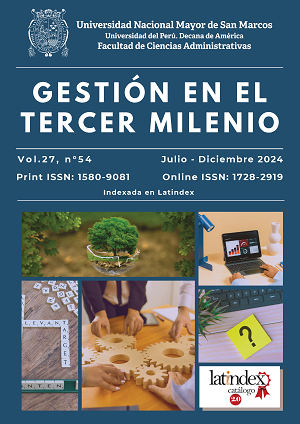Determinants of Public Investment by District Governments in the Department of Ayacucho, 2008-2023
DOI:
https://doi.org/10.15381/gtm.v27i54.29792Keywords:
public investment, local governments , subnational governments , public financing, political cycleAbstract
This study analyzes the determinants of public investment by the district governments of Ayacucho in the period 2008-2023, using a fixed-effects balanced microeconomic data panel model with 1,600 observations. The financing items and the political cycle were considered as regressor variables. The financing items evaluated, according to the Ministry of Economy and Finance (MEF), include: i) Ordinary Resources, ii) Municipal Compensation Fund, iii) Canon (redistributed tax revenue from extractive industries) and Royalties, Customs Revenue and Participations, iv) Donations and Transfers, v) Resources from Official Credit Operations, vi) Municipal Taxes, and vii) Directly Collected Resources. The political cycle was defined by the first three years of local management. The results show that the following items: i) Ordinary Resources, ii) Municipal Compensation Fund, iii) Canon and Royalties, iv) Donations and Transfers, v) Resources from Official Credit Operations, and vi) Municipal Taxes are significant and positive for public investment, while Directly Collected Resources are not. The analysis of the political cycle shows that the first, second and third year of municipal management have a significant and negative effect on public investment. In conclusion, ordinary resources, donations and transfers, the municipal compensation fund and municipal taxes are positive determinants of investment. Canon and Royalties are positive when they exceed S/ 2,505.977 (percentile 75). However, directly collected resources are not determinants and the political cycle of the first three years has a negative impact on investment.
Downloads
Published
Issue
Section
License
Copyright (c) 2024 Marco Antonio Palomino Moisés

This work is licensed under a Creative Commons Attribution 4.0 International License.
THE AUTHORS RETAIN THEIR RIGHTS:
(a) The authors retain their trademark and patent rights, and also over any process or procedure described in the article.
(b) The authors retain the right to share, copy, distribute, execute and publicly communicate the article published in Gestión en el Tercer Milenio journal (for example, place it in an institutional repository or publish it in a book), with acknowledgment of its initial publication in the Gestión en el Tercer Milenio.
(c) Authors retain the right to make a subsequent publication of their work, to use the article or any part of it (for example: a compilation of their work, lecture notes, thesis, or for a book), provided that they indicate the source. of publication (authors of the work, magazine, volume, number and date).






